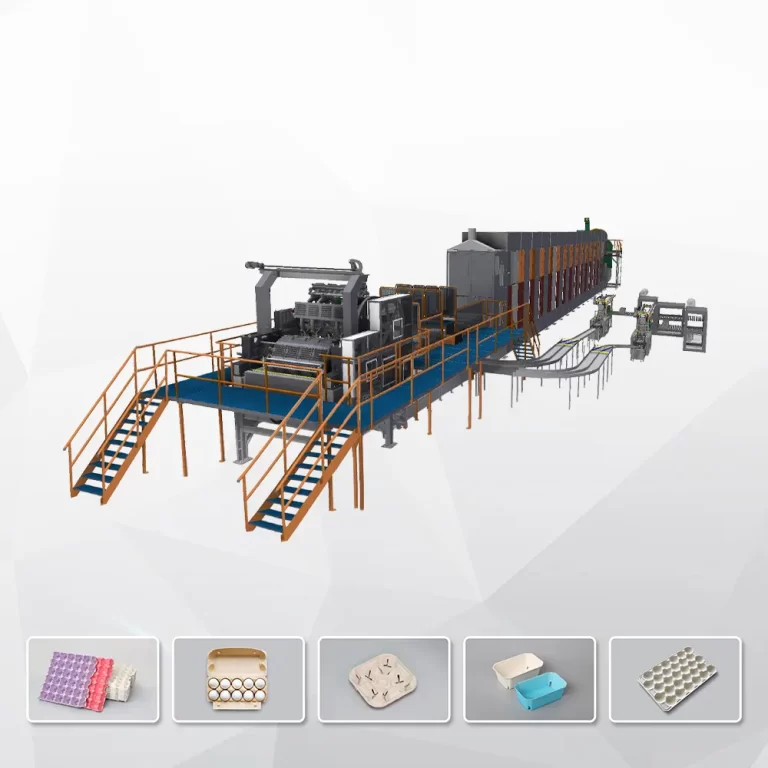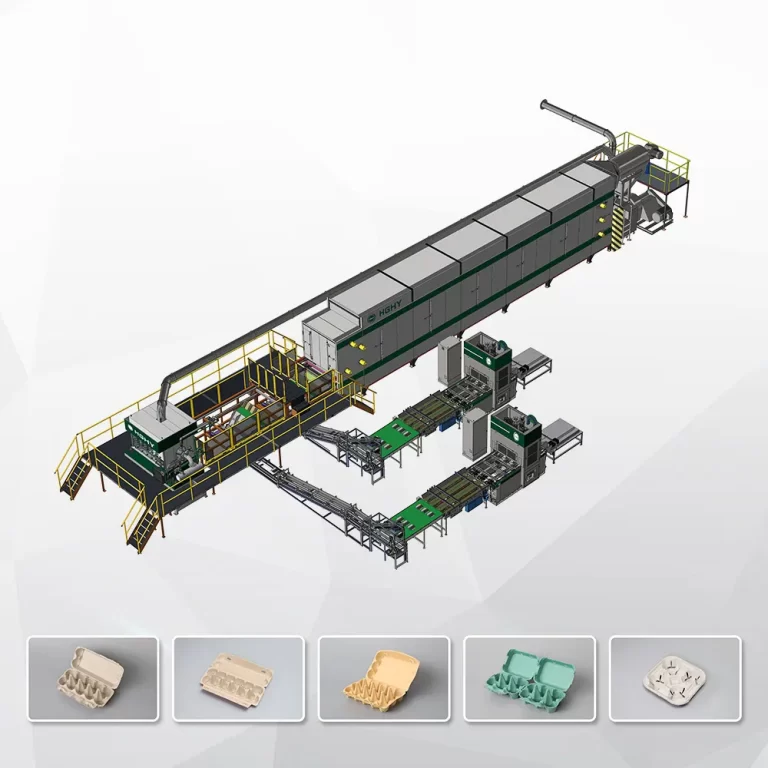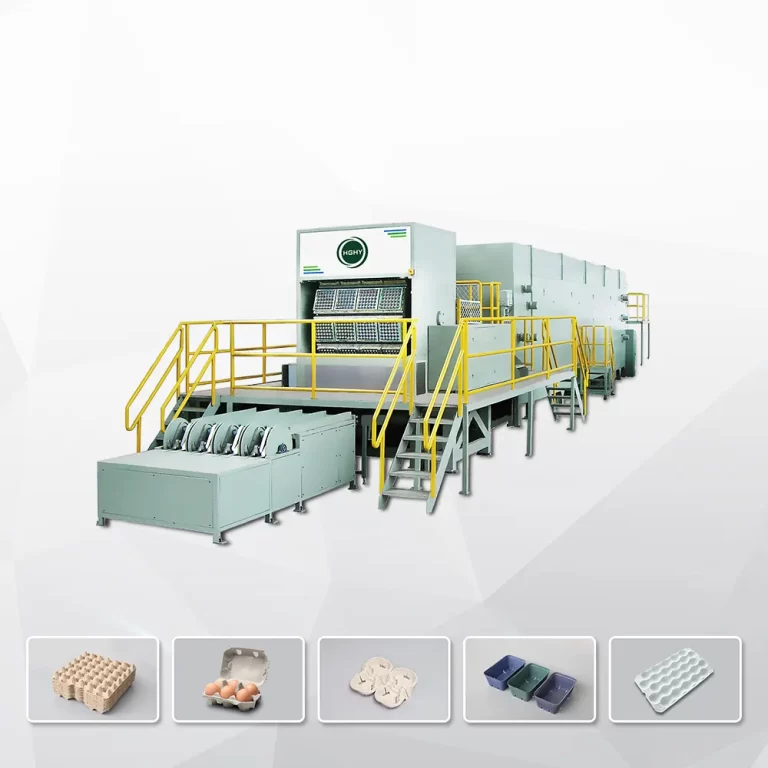Overview of Egg Tray Production
Egg trays, typically made from recycled paper, are essential for safely packaging and transporting eggs. The production process involves converting waste paper into pulp, which is then molded into the shape of egg trays. This process is not only environmentally friendly but also cost-effective, making it popular across the world.
Production Process
Pulping: The first step involves breaking down waste paper into a pulp. This is done by mixing the paper with water in a pulping machine. The result is a slurry, which is the raw material for the trays.
Forming: The pulp is then transferred to a forming machine. Here, the pulp is shaped into the desired form using molds. Typically, a vacuum system is employed to suck out excess water from the molds, leaving behind the wet egg tray shape.
Drying: After forming, the trays are still wet and need to be dried. Drying can be done naturally under the sun for smaller productions or in industrial dryers for larger operations. Industrial dryers use heat to quickly remove moisture from the trays, making them ready for use.
Packaging: Once dried, the trays are collected and packed for storage or shipment. Depending on the scale of the operation, this step may also be automated.
Machinery Used in Egg Tray Production
Pulping Machine: This machine is responsible for breaking down waste paper into a pulp, the basic raw material for egg trays. It usually consists of a hydropulper, pumps, and agitators to ensure a consistent slurry.
Forming Machine: The forming machine is central to the production process. It uses molds to shape the pulp into trays. The machine may be semi-automatic or fully automatic, depending on the production scale. It often includes a vacuum system to remove excess water from the formed trays.
Drying System: After forming, the trays need to be dried. Smaller operations might use sun drying, but most commercial setups use drying systems like conveyor dryers or brick drying lines, which utilize heat from fuel sources such as natural gas, diesel, or even biomass.
Packaging Machine: In larger operations, automated packaging machines may be used to stack and wrap the trays, making them ready for shipment.
HGHY Egg Tray Making Machines
Features and Capabilities
Production Capacity: HGHY offers a range of egg tray machines with varying production capacities. The machines can produce anywhere from 1,000 to 7,000 egg trays per hour, depending on the model. This wide range makes them adaptable to different business scales, from small enterprises to large industrial operations.
Automation: HGHY machines are typically highly automated, reducing the need for manual labor and increasing production efficiency. Automation also ensures consistent quality and reduces the chance of defects.
Energy Efficiency: Many HGHY models are designed to be energy-efficient, incorporating advanced technologies that minimize power consumption and reduce operational costs.
Suitability for Different Business Scales
Small to Medium Enterprises (SMEs): For smaller businesses or startups, HGHY offers models with lower production capacities that are cost-effective and easier to operate. These machines are ideal for businesses in regions where demand is moderate, or for those just entering the market.
Large Enterprises: Larger models are suitable for established companies with high production demands. These machines can handle large volumes and are often part of a fully automated production line, which is essential for maintaining high output and meeting market demands.
Investment Considerations
Investing in an HGHY Egg Tray Making Machine offers several benefits:
High Return on Investment (ROI): Due to the machines’ high production efficiency and low operating costs, businesses can achieve a substantial ROI. The ability to produce large volumes of trays at low cost allows for competitive pricing and profitability.
Eco-Friendly Production: As the demand for sustainable packaging increases, especially in regions with strong environmental regulations, egg tray production becomes more attractive. The use of recycled paper as a raw material not only reduces costs but also appeals to environmentally conscious consumers.
Scalability: HGHY machines are available in different capacities, allowing businesses to start small and scale up as demand grows. This flexibility is valuable for businesses looking to expand their operations gradually.
Durability and Support: HGHY machines are known for their durability and long service life. Additionally, the company provides comprehensive after-sales support, including installation, training, and maintenance services, which further enhances the value of the investment.



